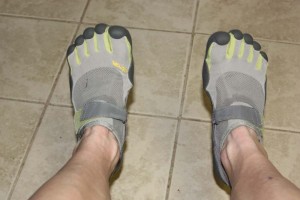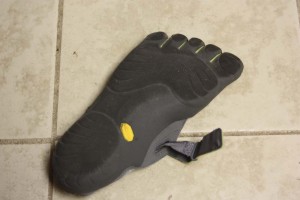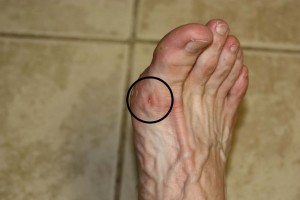As a running coach, I get a ton of questions about all the new gear that comes out on the market. Most of the time I keep a very neutral opinion on new gear unless I have tried it myself or the claims behind the product are ludicrous. These days, all it takes is one pro athlete to sport a new product to send consumers into a purchasing frenzy. As endurance athletes, we are generally “all in” when it comes to training and racing. We seek any product that can help us squeak out another PR, even before we seek the help of a trained professional <shameless plug>. Compression gear always comes to mind as an example. People see Chrissie Wellington crushing the marathon during an Ironman wearing some compression socks and they go and buy a pair without even understanding the science or purpose behind them. With that, I set myself on a mission to test some of the main products that I constantly get asked about and shed some light on the pros and cons from a purposeful training and coach’s perspective. As a disclaimer, some of the info that follows is based on my personal opinion or first impressions of the product or products. And no I won’t hold back.
One of the main products I constantly get asked about are the Vibram Fivefinger shoes. If you don’t know already, these kicks are the epitome of a minimalist shoe. As a die hard midsole running coach, I completely understand the science behind the shoe but have been skeptical as to the balance of risks vs. rewards of having zero cushioning or support under one’s foot. I spend a lot of time in the Nike Free shoes, as well as the Nike Lunar series, which I have found to be great midsole running shoes. My skepticism kept me away from these goofy looking shoes…until now.
First Impression
 After a generous gift from an athlete I coach, I finally got a pair (retail $85) to put to the test. The Fivefingers obviously look pretty crazy. But, if the performance benefits are there, who cares what they look like right? They are super light (just over 5oz) and have a very breathable upper. After spending about 10 minutes trying to get them on, they seemed pretty comfortable to walk around in. My foot was in between sizes so I wore them for a while to try to get them to stretch out a bit since I opted for the smaller size. They initially feel like a really tight sock that spreads your toes out. A little weird at first but they are not overly awkward. I think I have an extra long pinky toe because at first it was crying “wee wee wee” from being cramped. It did eventually feel better after walking around for a bit. After about 4 hours of wearing them, I started jonesing to run in them…so I did. (Not advised…read on my friends)
After a generous gift from an athlete I coach, I finally got a pair (retail $85) to put to the test. The Fivefingers obviously look pretty crazy. But, if the performance benefits are there, who cares what they look like right? They are super light (just over 5oz) and have a very breathable upper. After spending about 10 minutes trying to get them on, they seemed pretty comfortable to walk around in. My foot was in between sizes so I wore them for a while to try to get them to stretch out a bit since I opted for the smaller size. They initially feel like a really tight sock that spreads your toes out. A little weird at first but they are not overly awkward. I think I have an extra long pinky toe because at first it was crying “wee wee wee” from being cramped. It did eventually feel better after walking around for a bit. After about 4 hours of wearing them, I started jonesing to run in them…so I did. (Not advised…read on my friends)
During the Run
 As I headed out I immediately noticed the major benefit of the Fivefigners which was a more natural midsole foot strike. Without the chunky heel that most training shoes have, the foot passes under the center of mass much easier. If you resort to heel striking you are quickly reminded to get back on your midsole by the concrete, and no it doesn’t feel good. Nor does each and every acorn and pebble I stepped on, although not what I consider painful. Without the cushion of a normal sole, there is not much to dissipate the force you are putting to the ground, thus your pace picks up. Less sole means less time spent on the ground, which brings about an increase in speed. I found it to increase my pace by about :15-:20 per mile. However, with shorter time on the ground comes more impact force. If you are running midsole and contacting the ground under your hip these are mostly compression forces (pushing straight down) that the body can handle as opposed to the shearing forces (directed in a vertical and horizontal plane simultaneously) that most heel strikers face. I only went about three miles (which is more than I would recommend anyone doing for their first run on these), but somewhere around mile 2 a seam in the shoes started to wear a blister on my foot. It was uncomfortable to the point where I stopped for a second to try to adjust the shoe. All in all I like the performance of the shoe. But, I could tell that even as a well trained runner, my legs were taking a beating.
As I headed out I immediately noticed the major benefit of the Fivefigners which was a more natural midsole foot strike. Without the chunky heel that most training shoes have, the foot passes under the center of mass much easier. If you resort to heel striking you are quickly reminded to get back on your midsole by the concrete, and no it doesn’t feel good. Nor does each and every acorn and pebble I stepped on, although not what I consider painful. Without the cushion of a normal sole, there is not much to dissipate the force you are putting to the ground, thus your pace picks up. Less sole means less time spent on the ground, which brings about an increase in speed. I found it to increase my pace by about :15-:20 per mile. However, with shorter time on the ground comes more impact force. If you are running midsole and contacting the ground under your hip these are mostly compression forces (pushing straight down) that the body can handle as opposed to the shearing forces (directed in a vertical and horizontal plane simultaneously) that most heel strikers face. I only went about three miles (which is more than I would recommend anyone doing for their first run on these), but somewhere around mile 2 a seam in the shoes started to wear a blister on my foot. It was uncomfortable to the point where I stopped for a second to try to adjust the shoe. All in all I like the performance of the shoe. But, I could tell that even as a well trained runner, my legs were taking a beating.
After the Run
 When I got home I pulled the Fivefingers off and was greeted by this small blister on my right foot. The left foot came out unscathed. I also noticed my big toes felt a little raw. Vibram sells socks for these shoes which could very well be the answer to all the comfort issues thus far. However, I was pleased with the comfort of the back of the shoe where a lot of blisters show up when running sockless. I immediately noticed my achilles tendon and soleus (lower calf) were already kind of sore. This tells me I may have pushed it a little too far since I have not been sore after a run in quite a few months. It also tells me that a newer runner could easily overdo it in these shoes.
When I got home I pulled the Fivefingers off and was greeted by this small blister on my right foot. The left foot came out unscathed. I also noticed my big toes felt a little raw. Vibram sells socks for these shoes which could very well be the answer to all the comfort issues thus far. However, I was pleased with the comfort of the back of the shoe where a lot of blisters show up when running sockless. I immediately noticed my achilles tendon and soleus (lower calf) were already kind of sore. This tells me I may have pushed it a little too far since I have not been sore after a run in quite a few months. It also tells me that a newer runner could easily overdo it in these shoes.
Pros
- Very good at allowing the athlete to feel a true midsole foot strike
- Very light
- Great for increasing foot and ankle strength
- Very breathable
- Machine washable
- Very fashionable 🙂
Cons
- Seams can rub blisters (could be due to the lack of a break in period)
- A little tricky to put on
- Not advised for those with strength as a limiter
- Big potential to injure an athlete who goes too far, too soon
Conclusion
There are definite benefits to the Vibram Fivefingers. The main benefit comes from the natural midsole strike that one gets when wearing the shoes. This is great for anyone working on midsole mechanics. These shoes are also great for increasing lower leg strength. The lack of support forces the lower leg muscles to do a lot more stabilizing than a normal training shoe. However, these shoes MUST be used progressively and in moderation. Vibram sets forth their own recommendations for usage, but I would suggest anyone who purchases them to walk around in them for at least a few days before running any distance. After that, I would stick to using them during mechanics or running skill sessions and runs of 3 or less miles. Of course, with the right periodized training program, these shoes can be perfectly fine for any distance, as proven by the many people who have used them during ultra running events.
I would advise anyone who has strength as a limiter (specifically in the hips) or bone density issues against using these shoes being that the impact forces upon ground contact are increased. Keep in mind, increased impact forces will not necessarily put an athlete at greater risk of injury if those forces are compression forces vs. shearing forces. An athlete with weak hips generally has bad hip/knee alignment when running which causes shearing forces in the knee joint. Strong hips means good alignment and more tolerable (compression) impact forces.
All in all my very first experience with the Vibram Fivefingers was not stellar due to blisters, but as a coach I do see an obvious benefit to using them. Count them out for a triathlon shoe due to the time it takes to get them on, although it does get easier after a few wears. I am interested in continuing to explore their benefits and will post any updates or findings in the future. If you have any questions about them, feel free to contact me or visit their website, www.vibramfivefingers.com.
If there are any another products you have questions about, or you have a product you want the BPC coaches/athletes to try out and review, feel free to drop us a line.
